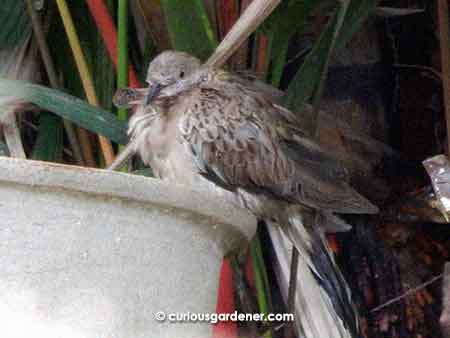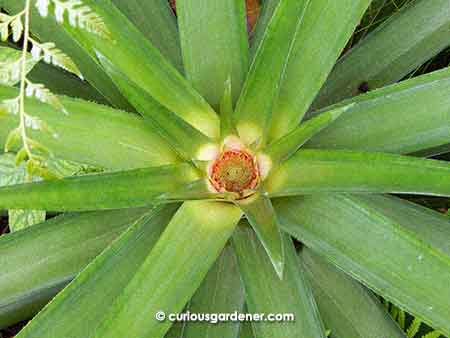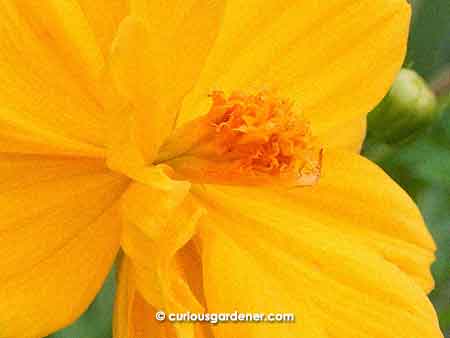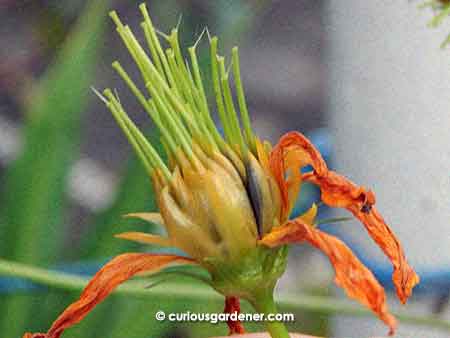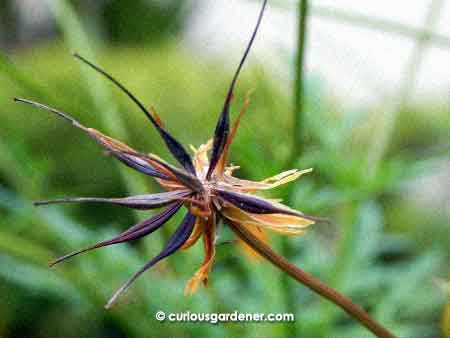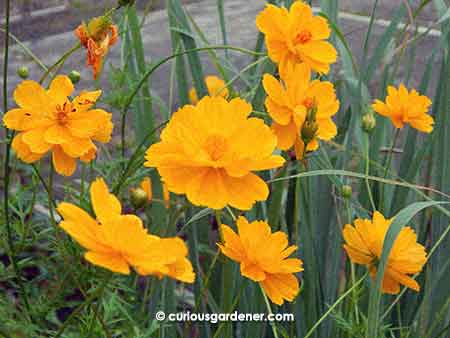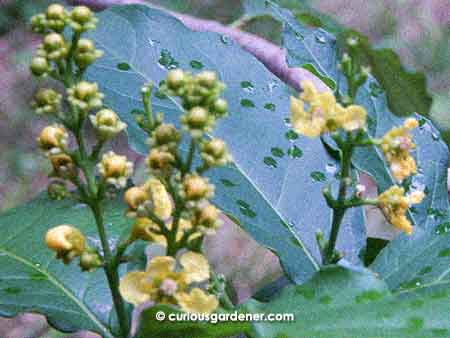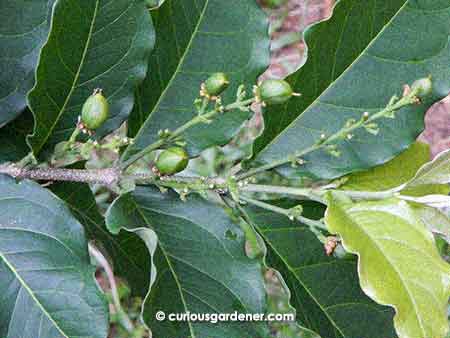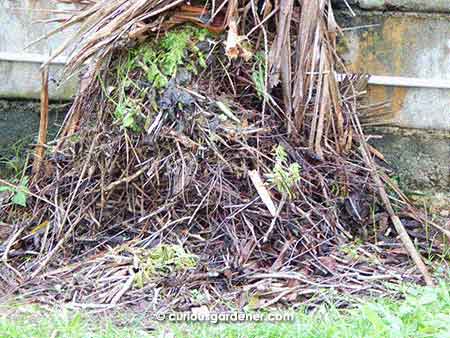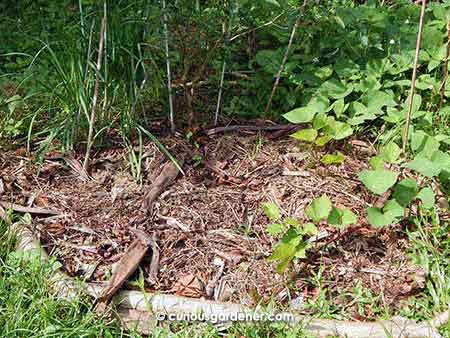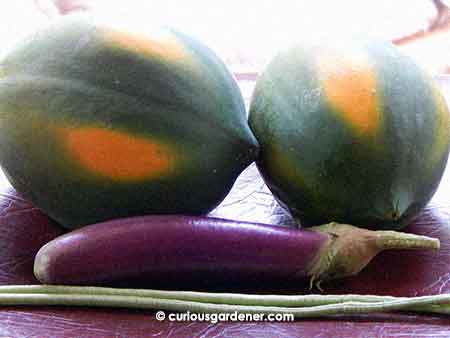
Our humble harvest on New Year’s day – Red Lady papayas, a purple brinjal and a couple of long beans.
It’s nice to start the new year on a positive note. The edible garden is as productive as it can be at the moment – although there’s always room for improvement, and something is better than nothing, right? We harvested papayas before the birds decided to start eating them – which is only fair because they’ve been enjoying the mulberries over the last week – and a decent purple brinjal and a couple of long beans. Fortunately, the long bean plants are happily fruiting now, but they’re at all stages of development.
Note to self: Sow more bean seeds asap…
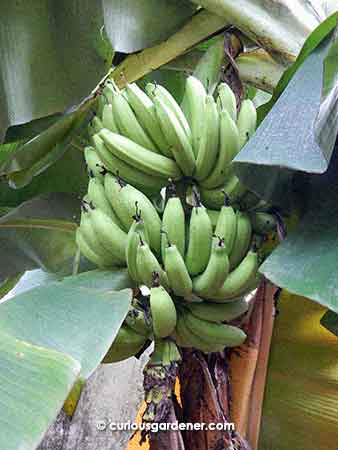
A rather small comb of bananas, but they’re looking better and better each day that they ripen more!
The bananas are also getting closer to harvest. This bunch began to grow during the bad haze period, and I think didn’t reach the usual potential because of the lousy conditions then. That doesn’t matter – I’m sure they’ll be as sweet as they always are! (Mother Weed, do they look ready yet?)
I accidentally discovered a young dove when I was poking around before lunch. With the amount of fluffy down that it still has, I know it’s very young. I just hope it didn’t fall out of its nest and that it will be able to fly back up to a safe perch at night. There have been occasional similar incidents that didn’t end nicely. Today being New Year’s, I’m going to think positive and just be glad that there’s new life in our garden – and it’s adorable!
The highlight of my garden ramblings today was discovering that we are FINALLY going to see a pineapple grow here! My elation is tempered by my consternation that it’s “only” taken… oh… three and a half years to finally reach this stage… But, again, being New Year’s, I shall look on the bright side and embrace the traditional Chinese belief that a pineapple is a sign of good fortune – in feng shui, it is believed to harness good luck for greater prosperity, abundance and happiness. I’m just looking forward to harvesting the fruit, though. That’s supposed to take six months, but with my luck, who knows? Haha!
So I’d like to wish all of you the very best in this new year. Some of you have been with me since I started this blog while others have joined in more recently. Thank you, all, for joining me in my gardening journeys and do start some of your own if you haven’t already! Happy New Year, and happy gardening!
© 2016 curiousgardener.com All rights reserved.

